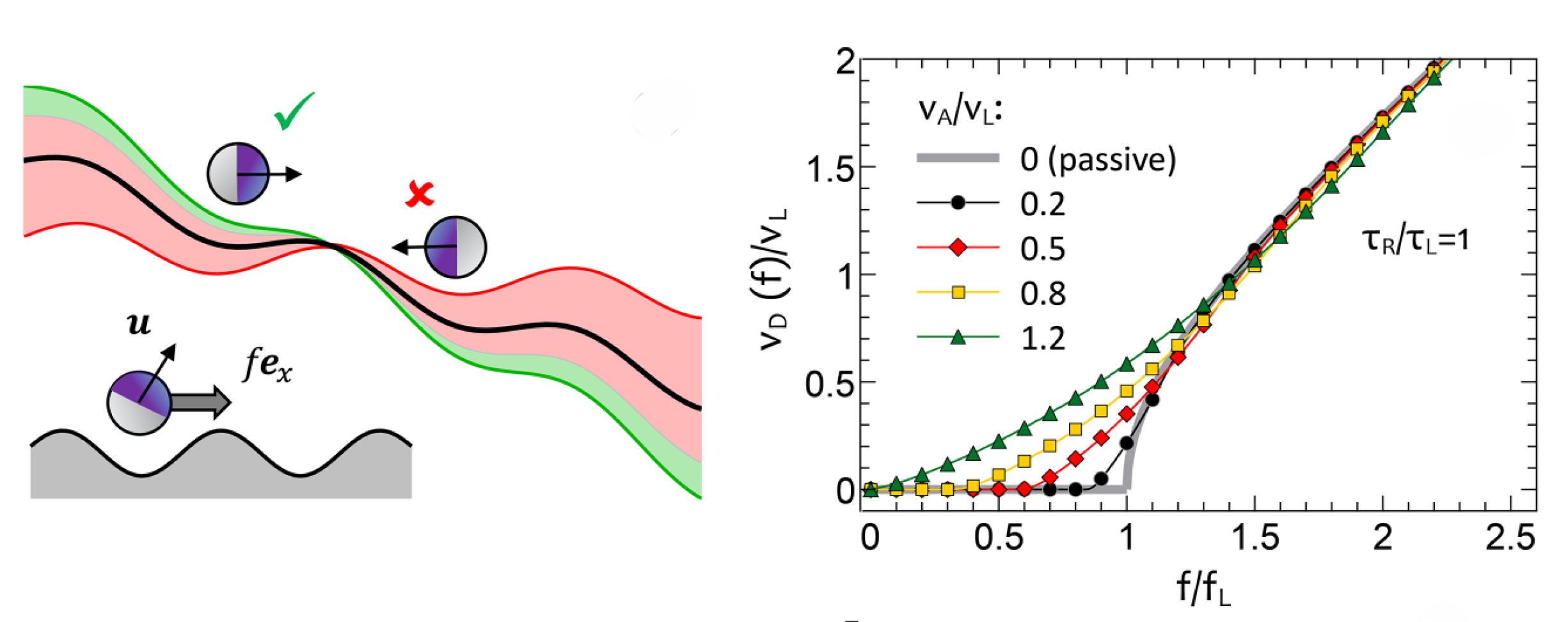Recent highlights
Activity impacts depinning — defying expectations!
Background & motivation: Self-propelled particles, such as microorganisms or microrobots, move through environments in ways that differ fundamentally from passive systems. Unlike passive systems, these active particles exhibit persistent motion that interacts in unique ways with external forces and patterned substrates, which may affect their transport and behavior in unexpected ways. Understanding how activity influences the depinning transition—where a system shifts from immobility to motion under an external force—is crucial for applications ranging from cell migration to the development of microrobots for specific tasks. The need to explore these effects in active matter systems motivates a deeper investigation into the nonlinear responses that arise from self-propulsion.
Figure: Stochastic reorientation of active particles can be interpreted as a randomly changing tilt (left). The depinning law appears softer, with a decreased critical force, but the transition remains sharp due to bounded nature of the active noise (right).
Findings: Based on the paradigm of active Brownian particles (ABPs), our findings reveal that self-propulsion fundamentally alters the depinning transition. While a sharp transition remains, the critical force shifts below the passive threshold, influenced by propulsion strength but not by orientational persistence time. The approach to the transition point varies as a function of the persistence and the dimensionality d of the rotational motion, with two distinct power-law behaviors emerging: with the exponent 1/2 emerging for the limit of rapidly reorienting ABPs and with the exponent d/2 for the limit of ABPs with persistent orientation. For intermediate cases, a unique creep regime appears where the drift velocity vanishes superexponentially. For persistent particles, an additional singularity appears, and the dispersion coefficient shows giant enhancements, depending on persistence time. These results challenge traditional models of passive systems, offering new insights with potential experimental applications in active colloids, bacterial migration, and other nonequilibrium phenomena driven by bounded noise.
Publication:
A.V. Straube, F. Höfling,
Depinning transition of self-propelled particles,
Phys. Rev. E 110, L062601 (2024) (No access? Get a reprint here)
